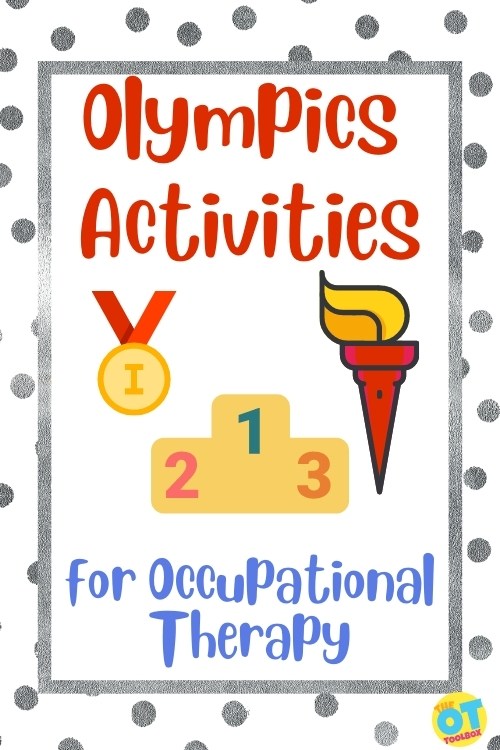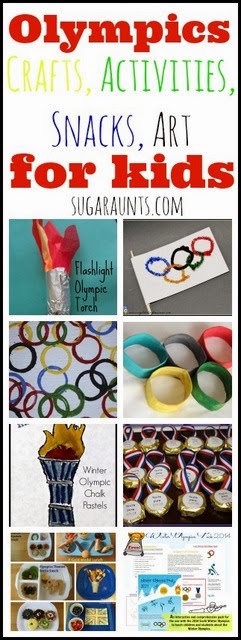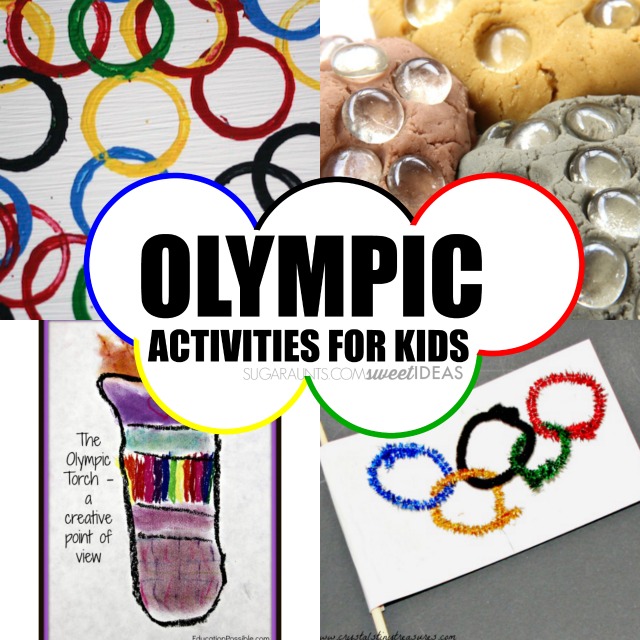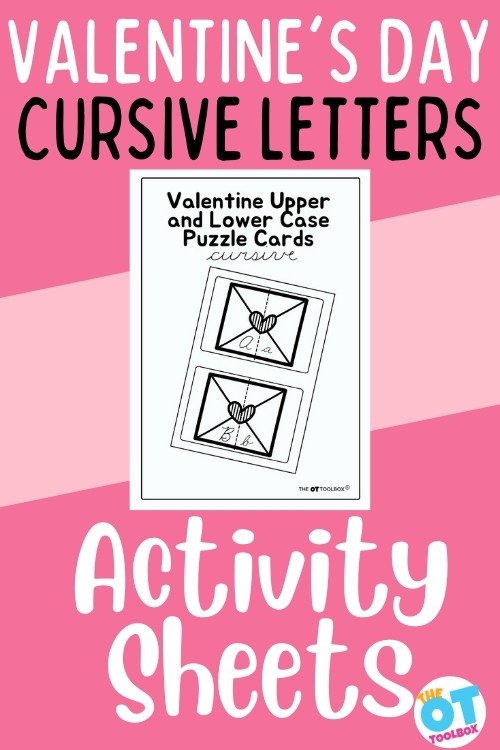Ready to get your little athletes moving in therapy with some Olympics activities for therapy goals? Here, you’ll find fun Olympic crafts, games, and ideas to support development through play. Start my making an Olympic Rings craft to develop fine motor skills, and then move onto gross motor ideas, medal activities, and more!

Olympic Activities for Therapy
I’ve tried to sort the Olympics activities below into skill area, so if you are looking for ideas to promote fine motor skills, check out the craft ideas. If you need gross motor activities, check out the Olympic games ideas. All of these ideas can be great for ceremony in your own therapy clinic! These are great to add to lesson plans this time of year.

Fine Motor Olympic Crafts for Kids
Are you looking for a few fun ideas for the kids to celebrate the Olympic Games?
- Try making gold, silver, and bronze play dough with crayons for a bold color and smooth, glittery texture to the metallic play dough that will last for the length of the Olympic games. Be sure to store the play dough in a plastic bag and you will be able to create play dough medals for weeks.
- You could make an Olympic torch, olive leaf crown, and read a few Olympic books like Teach Beside Me did: Greek Olympics Lesson.
- Cut foil to make medals. Use a craft stick to write names or numbers right onto the foil to work on pencil pressure.
- Use foil to wrap around a plastic lid or cardboard circle.
- Draw a soccer field on a large piece of paper. Use clothes pins to move a cotton ball or craft pom pom to different points on the field. Or, use a straw to blow the craft pom pom across the field to work on oral motor skills.
- Or, you could make an Olympic Flag Craft using construction paper and a paper tube.
Olympic Art for Kids
If Olympic Art is more your style, use paints, stamps, or craft materials to make rings.
- Use a tissue box to make ice skates.
- Use a toilet paper tube or paper towel tube to make an Olympic torch (just add tissue paper for the flame). This is a great tool to use in an obstacle course too!
- Make a discus using a paper plate. Staple two plates together around the edges.
- Create Olympic rings by tracing a cup, cookie cutter, paper bowl and creating the rings.
- Stamp rings using a paper towel tube.
We love this Olympic Rings Art. made from a re-purposed canvas from Happy Hooligans.
Gross Motor Olympic Games for therapy
The Olympics are a great theme to use in therapy sessions. Try these movement activities for gross motor skills, coordination, balance, endurance, and sensory input:
- Crawling along an obstacle course
- Balance beam activities
- Indoor ice skating
- Animal walks
- Relay races
- Create a paper plate discus and throw it at a target (a hula hoop works well)
- Wheelbarrow walks
- Throw a pool noodle like a javelin throw
- Use balls or bean bags in a shot put activity
- Use a scooter board and pretend it’s a bobsled or skies
- Bounce a ball around a cone
- Sled or ski down a therapy wedge
- Use buckets or cones to create relay races
- Create hurdles using pool noodles for jumping over and crawling under
If getting active is on your agenda, KCEdventures shows us how to plan your own Olympic celebration for kids.
Olympic Handwriting Activity
Ask your therapy attendees to write a list of Olympic sports. Work on handwriting skills such as letter formation, margin use, line awareness, and legibility.
- You can also follow the highlights reel online and keep track of the number of medals accumulated by each country, or write down the top countries according to medal count.
- To work on number formation, use graph paper as a medal tracker. This is a motivating activity for learners!
- Another fun therapy activity to use during the Olympics is to create a large venn diagram on paper, a wall chalkboard, or dry erase board. The learners can write out the similarities and differences between the Winter Games and the Summer Games. This handwriting task focuses on organizational skills, spatial awareness, and margin use.
Write a list of winter sports being played during the Winter Olympic Games:
- Bobsled
- Skiing
- Figure skating
- Speed skating
- Snowboarding
- Ice hockey
- Curling
- Luge
- Skeleton
Olympic Visual Motor Activities
Support visual motor skills by asking kids to copy the Olympic rings. Include colors to engage visual perceptual skills.
Olympic Food for Kids
Getting the kids involved in a cooking activity is a great executive functioning activity. Try these Olympic themed foods:
Make these rainbow snacks using colors of the Olympic rings.
These Olympic foods for Kids has some great ideas.


Colleen Beck, OTR/L has been an occupational therapist since 2000, working in school-based, hand therapy, outpatient peds, EI, and SNF. Colleen created The OT Toolbox to inspire therapists, teachers, and parents with easy and fun tools to help children thrive. Read her story about going from an OT making $3/hour (after paying for kids’ childcare) to a full-time OT resource creator for millions of readers. Want to collaborate? Send an email to contact@theottoolbox.com.




